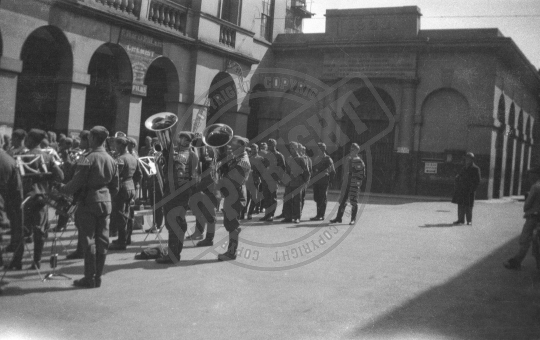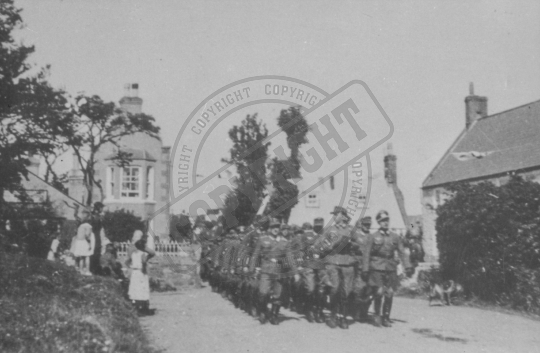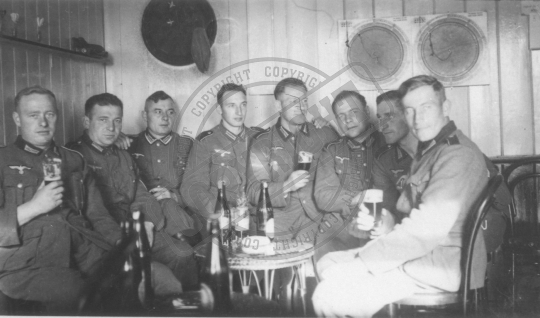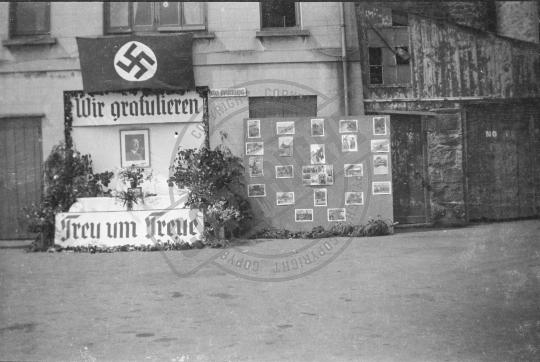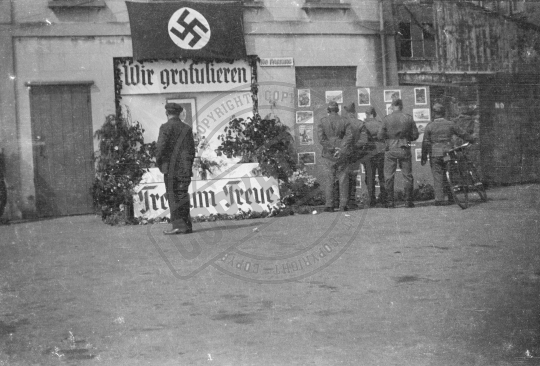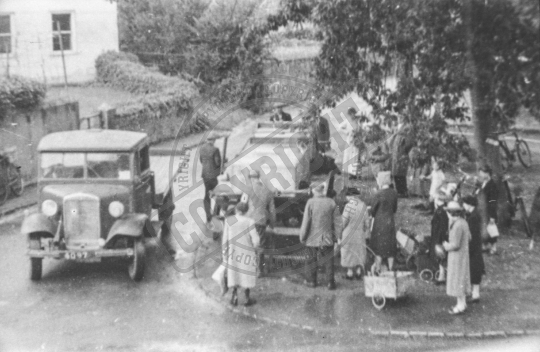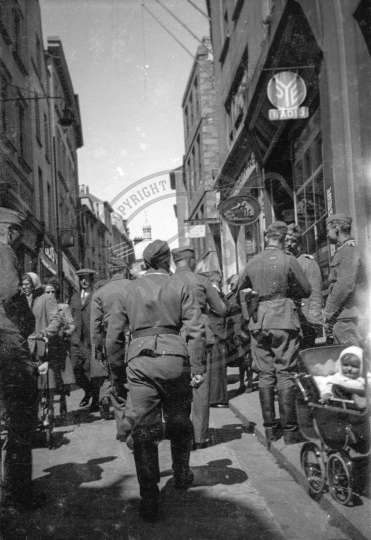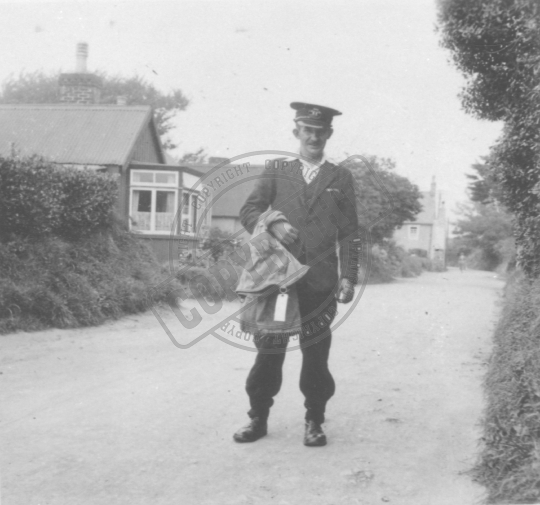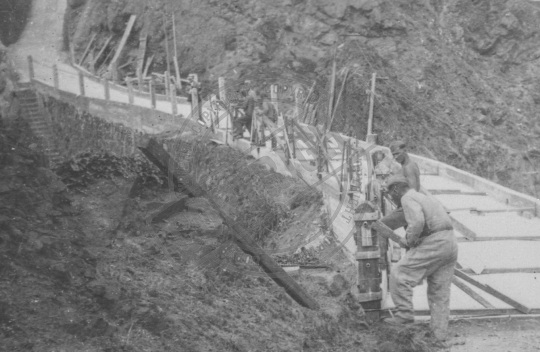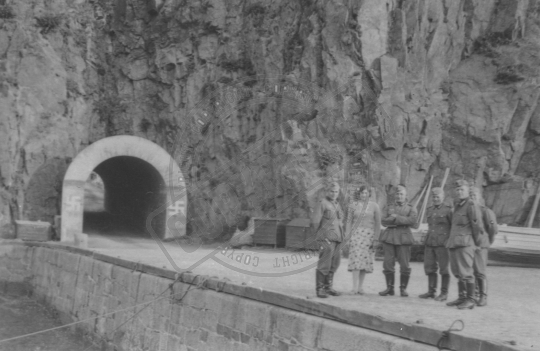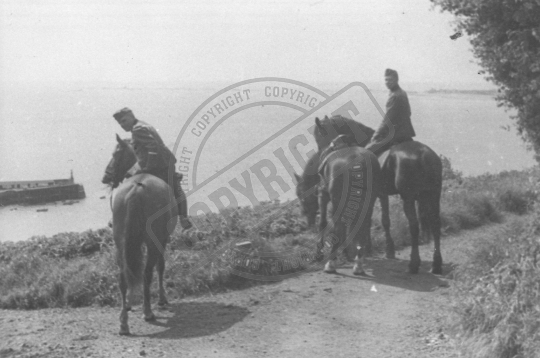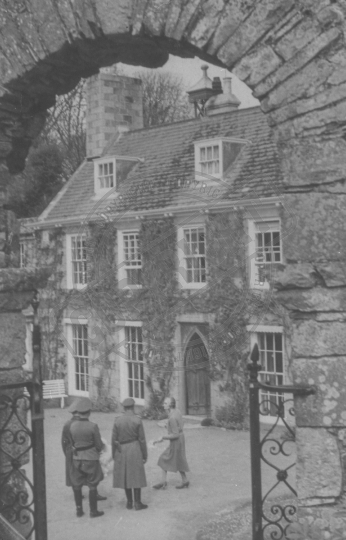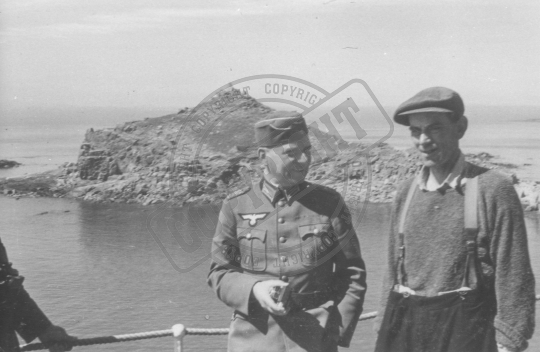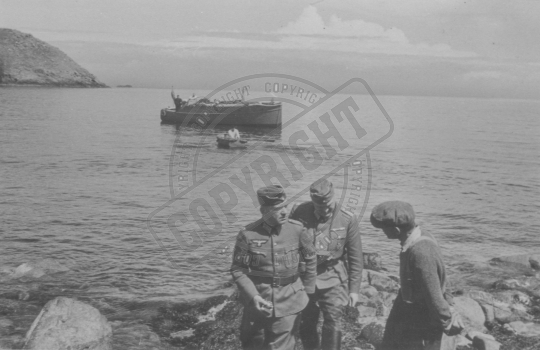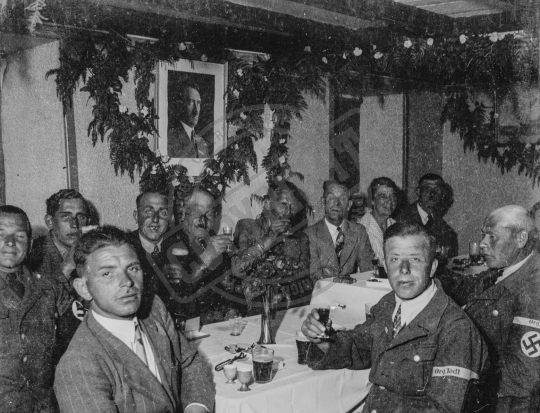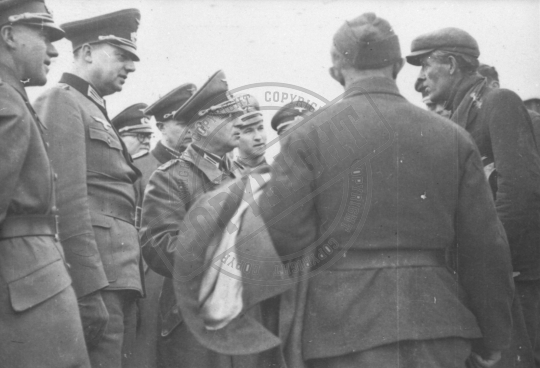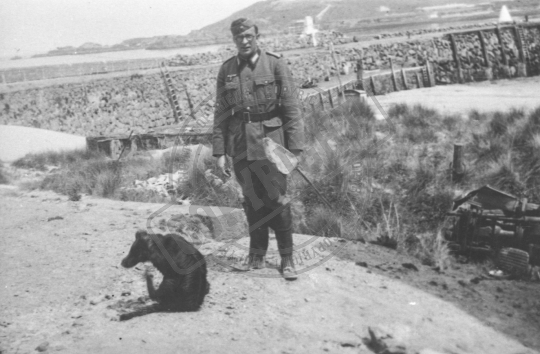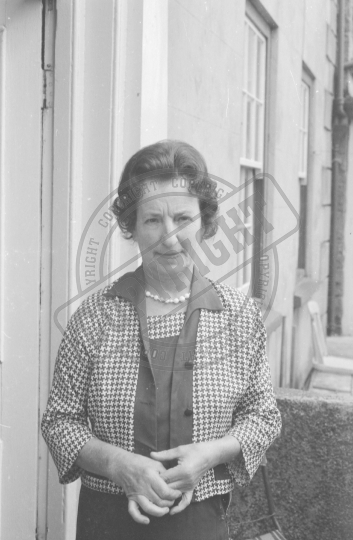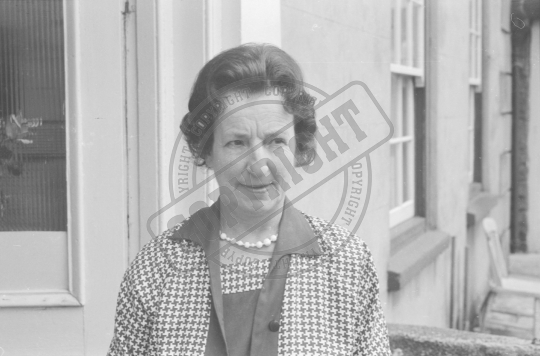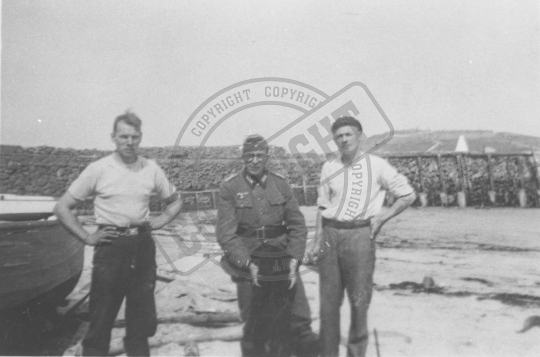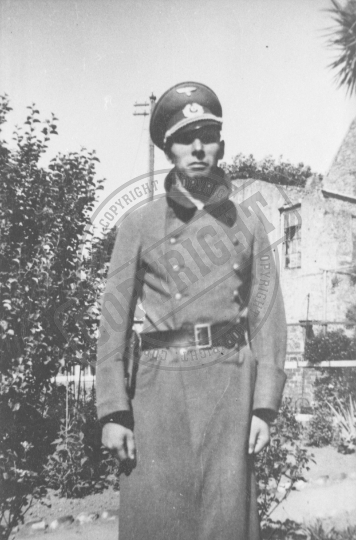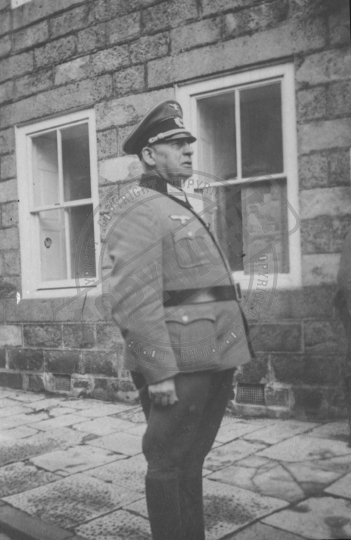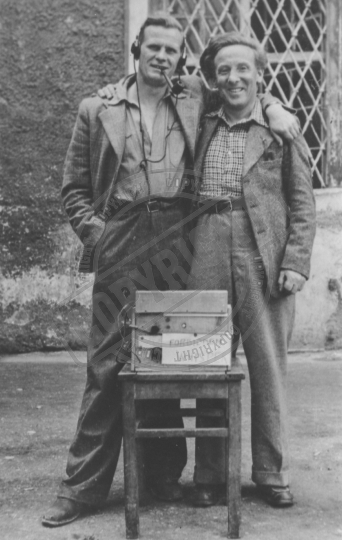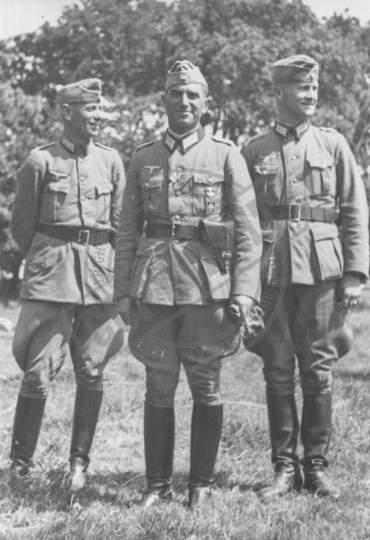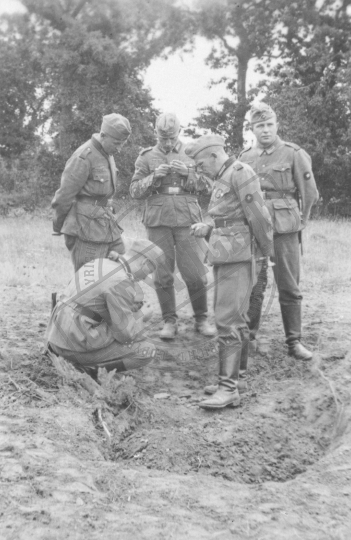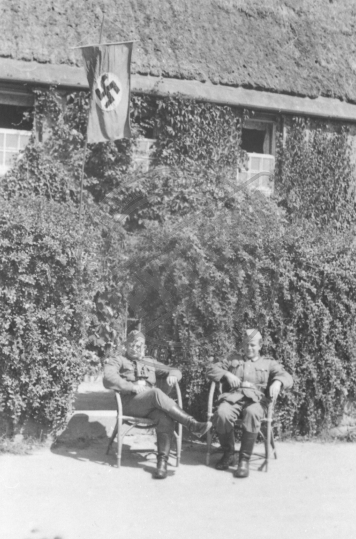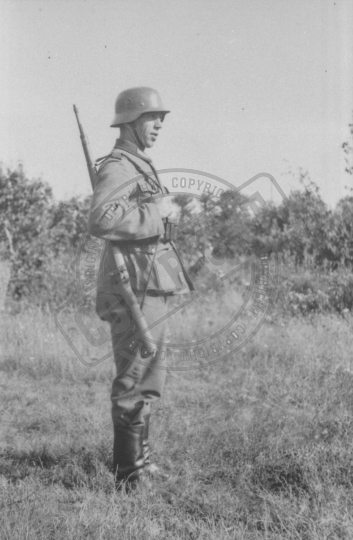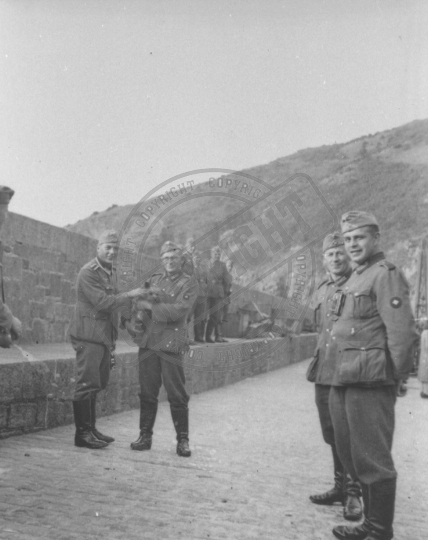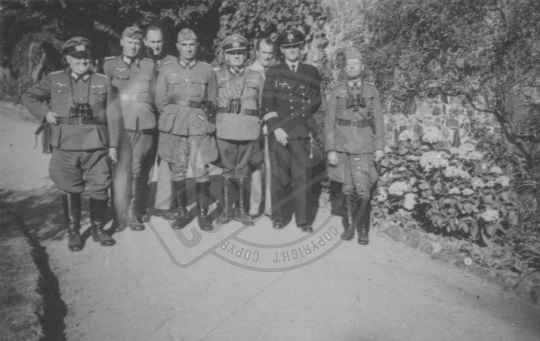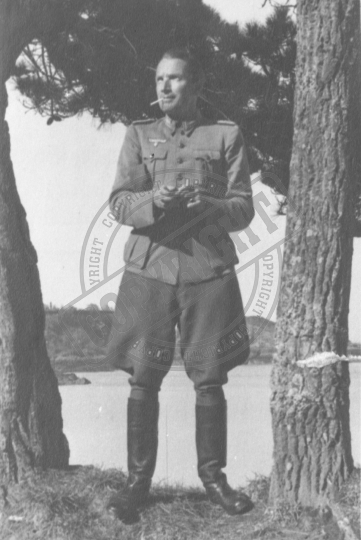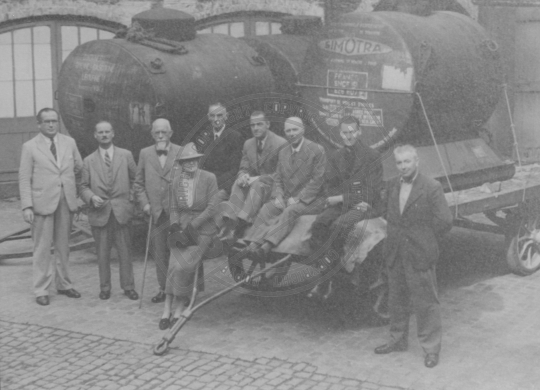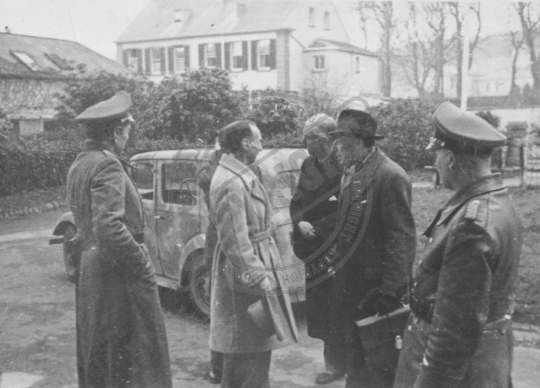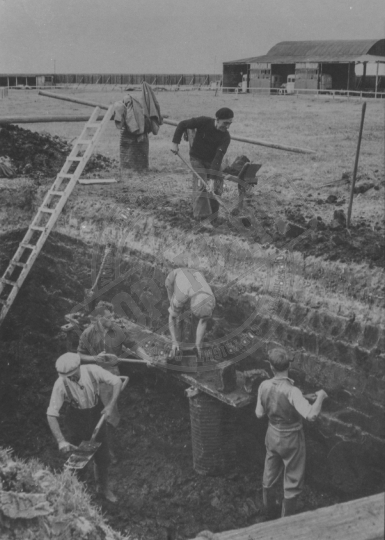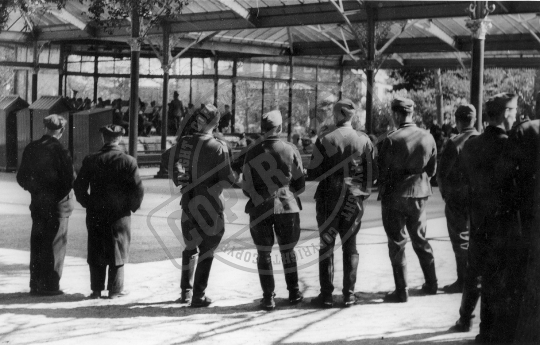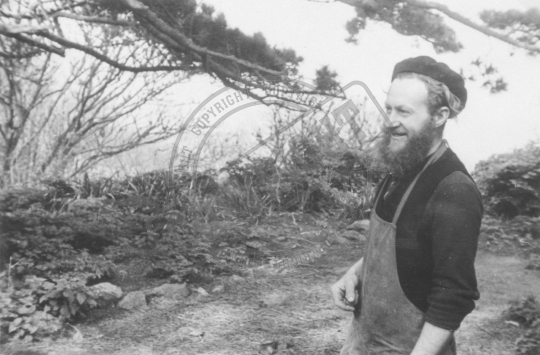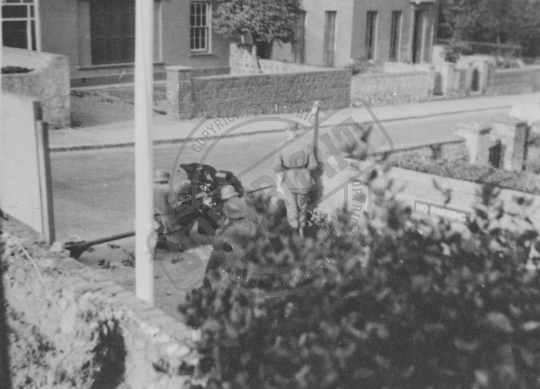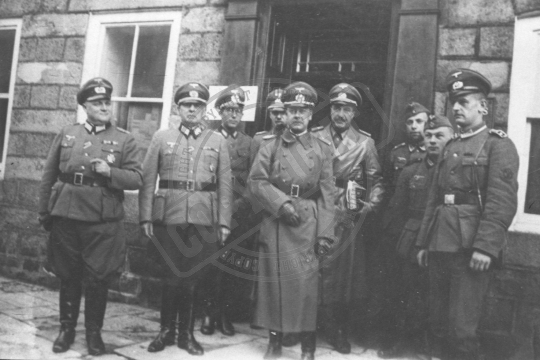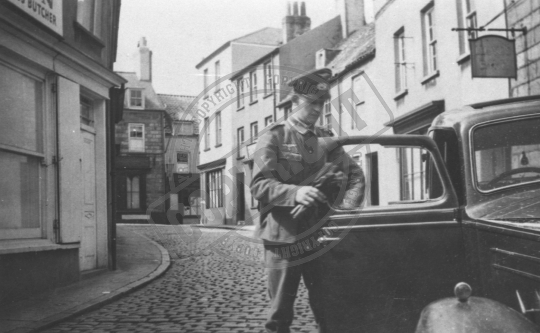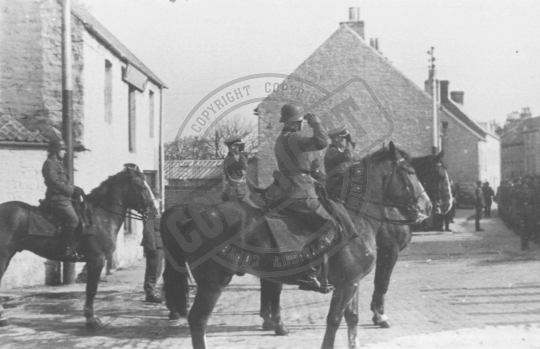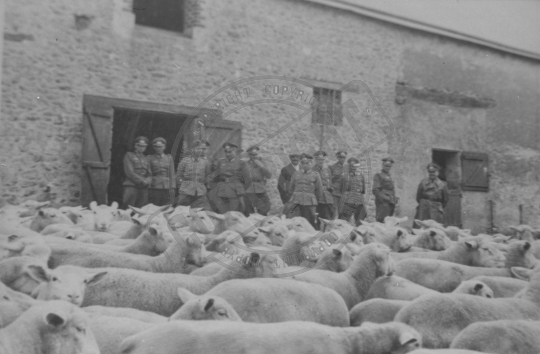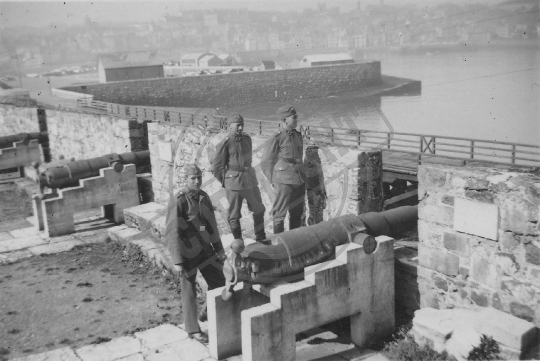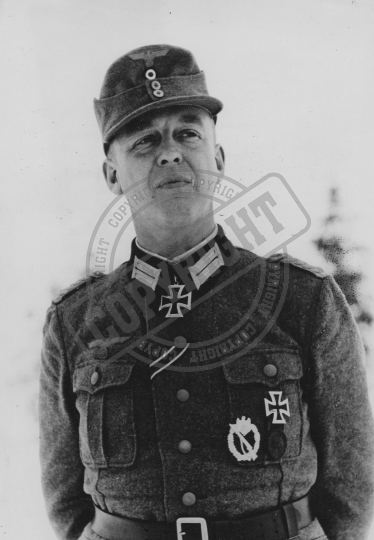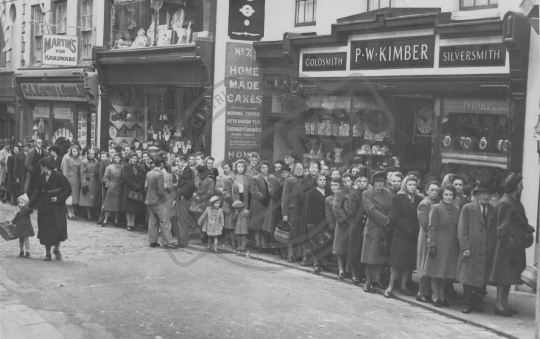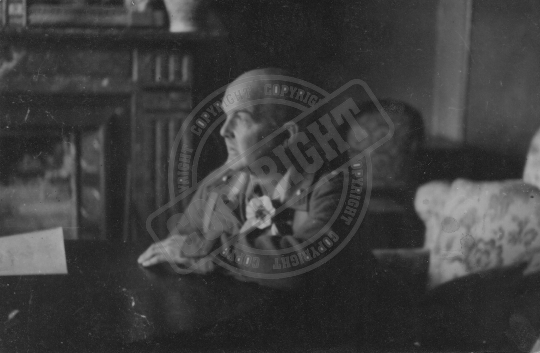People (99)
TPL_00300
A Sergeant and ten soldiers took over Sark at the beginning of the occupation, at the end there were almost three hundred. This image shown German troops marching along the Avenue.
TPL_00299
During the early days of the occupation German troops found Sark public houses well stocked with beer and spirits. Soldiers always removed their belts and sidearms when on licenced premises.
TPL_00297
German soldiers take a moment to look at the display in St Peter Port on Hitler`s birthday in 1942.
TPL_00296
Corporal Forst and Sergeant Major Ertel photographed outside Lloyds Bank in Alderney 1941.
TPL_00295
People queuing at the junction of the Rohais and La Foulon to collect rations of sea water in which to boil food as salt was unobtainable.
TPL_00294
German forces made a mad rush for the well stocked shops in the early days of the occupation. Here we see both Germans and civilians in the High Street, St Peter Port, Guernsey.
TPL_00293
Percy Brown, Sark`s postman delivering mail on August Bank Holiday, one month after the German Occupation of Sark.
TPL_00292
La Coupee, the narrow road linking Sark with Little Sark was in such a bad state of repair that the Royal Engineers used German prisoner of war labour to reconstructed the complete road in concrete.
TPL_00291
A group of visitors to Sark in 1940, note the swastika painted at the tunnel entrance leading from Creux harbour.
TPL_00290
German officers of Feldkommondantur 515 riding some of the fine German horses imported into the islands during the Occupation, overlooking Gorey Harbour, Jersey.
TPL_00289
Mrs Sibyl Hathaway talking to three German officers who have called on her at La Seigneurie in Sark where she remained throughout the occupation.
TPL_00288
Oberst (Colonel) Knackfuss, Guernsey Feldkommandantur, with Mr. G.MacDonald, caretaker of Jethou.
TPL_00287
Oberst (Colonel) Knackfuss, Guernsey Feldkommandantur, with Mr. G.MacDonald, caretaker of Jethou.
TPL_00285
German Officers in Alderney. Oberst Knackfuss (with monocle) with other officers and what appears to be a forced labourer.
TPL_00284
Sonderfuehrer Hans Herzog and his dog Lux seen here at the old harbour in Alderney whilst out catching shrimps.
TPL_00283
Mrs Winifred Green, a waitress at the Royal Hotel, who was imprisoned for four months at Caen for saying "Heil Churchill".
TPL_00282
Mrs Winifred Green, a waitress at the Royal Hotel, who was imprisoned for four months at Caen for saying "Heil Churchill".
TPL_00281
German personnel and their guests on the way to the Casquets for an outing in the summer of 1941.
TPL_00280
Peter Doyle, Sonderfuehrer Herzog and George Pope a fisherman and pilot, photographed in Alderney.
TPL_00279
Hans Herzog, second from right and German officials seen here with C.F. Hutchesson on the far right.
TPL_00277
Oberst (Colonel) Schumacher of Feldkommondantur 515 based in Jersey seen here outside Lloyds Bank Alderney May 1941.
TPL_00276
Vizeadmiral Fredrich Hueffmeir and Generalmajor Rudolf Wulf are seen here after the German surrender when they arrived in Plymouth on 12th May 1945.
TPL_00275
Frank Stroobant with Fred Williams and the 'Silent Whisper' at Laufen, after their Liberation, in April 1945.
TPL_00274
The Commandant Dr Lanz (middle) with Lieutenant Muller (left) and Dr Maas (right) shown here in Sark.
TPL_00273
Several bombs were dropped on Sark by British aircraft, these German soldiers are excavating the remains of a bomb that fell in the garden next to the Vicarage.
TPL_00272
Soldiers relaxing outside the Bel Air Hotel, the German headquarters in Sark until it was accidentally destroyed by fire caused by careless use of a paraffin stove.
TPL_00269
Major Lanz seen here fourth from left with a group of army and navy officers at Harbour Hill in Sark.
TPL_00268
Platzkommandant Hans Max Baron von Aufsess held the key position of Head of Civil Affairs of Feldkommondantur 515, in Jersey.
TPL_00266
At the Hotel Metropole, site of the military headquarters in Jersey, a meeting took place before the Red Cross cargo was unloaded. Baron von Aufsess, Colonel Iselin, Duret Aubin and the Bailiff Coutanche were all present.
TPL_00265
In 1940 it was soon evident there would be a shortage of domestic fuel so many tons of peat were dug from a bog at Vazon in Guernsey and St Ouen`s Bay in Jersey.
TPL_00263
Mr F.M Dickson who was caretaker in Herm during the Occupation, the Germans referred to him as Robinson Crusoe.
TPL_00262
Germans man a 3.7cm Pak anti-tank gun in the entrance to the St Johns Ambulance Station located at the top of the Rohais, St Peter Port. At great risk this was photographed by Reg Blanchford.
TPL_00260
Outside the Alderney headquarters for the Feldkommondantur 515, the German Civilian administration on 1st May 1941. Hans Herzog the Sonderfuehrer for Alderney is seen with members from the Feldkommondantur 515 Guernsey and Jersey, which were based at the Grange Lodge and Victoria College respectively. Also there was second from the left, Oberst Schumacher and fourth from the left peeping through the gap is Dr. Kratzer.
TPL_00259
Sergeant Oeser outside Feldkommondantur 515 headquarters at Lloyds Bank, Alderney in June 1941.
SP_0004
Germans stand alongside one of the cannons of Castle Cornet in St Peter Port. The Castle was the 'Hafenschlosss' (harbour Castle) during the occupation of Guernsey by German forces from 1940 until 1945. The occupying forces built air raid shelters and platforms for anti aircraft-guns to update the Castle for 20th century warfare.
OA_063
Generalmajor Rudolf Wulf who was the Festungskommandant Jersey at liberation seen here after the award of his Knight’s cross of the Iron Cross, on 12th January 1943. At the time he was an Oberstleutnant (Lieutenant-Colonel) in charge of an infantry regiment.
OA_035
Ration queue extending down The Pollet in St Peter Port, past P. W. Kimber Gold and Silver Smiths, past a sparse looking shop window display, and C. A. Martin & Sons Ltd Hardware Shop.
OA_033
Guernsey, 9th May 1945. Colonel H. R. Power, OBE, MC (late Glosters), Chief civil affairs Officer (CCAO), No. 20 Civil Affairs Unit, HQ Guernsey, Force 135.



